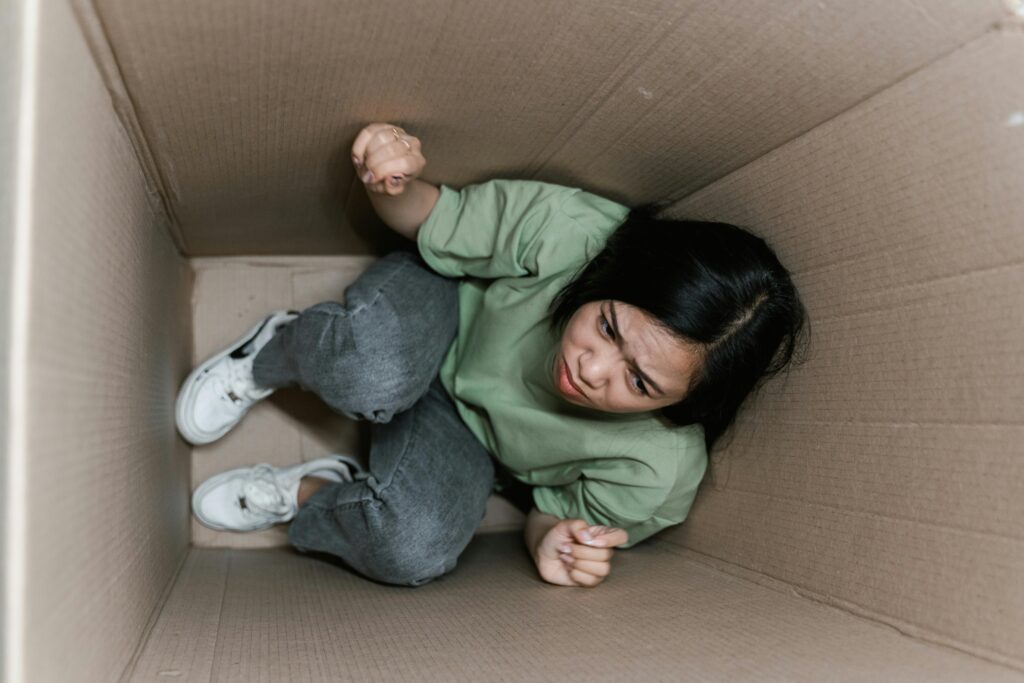Anxiety is a common human experience, but when it becomes chronic, it can disrupt daily life, relationships, and overall well-being. The key to managing anxiety isn’t just about reducing symptoms—it’s about building resilience so you can navigate stress with greater confidence and adaptability.

This guide provides a deep, step-by-step approach to developing resilience against anxiety. Unlike quick-fix solutions, resilience is a skill that strengthens over time through consistent practice. Below, we’ll explore psychological strategies, lifestyle changes, social support systems, and long-term habits that help you regain control over anxious thoughts and reactions.
Understanding Anxiety and Resilience
What Is Anxiety?
Anxiety is the body’s natural response to perceived threats, activating the “fight-or-flight” system. While short-term anxiety can be helpful (e.g., preparing for a presentation), chronic anxiety leads to excessive worry, physical symptoms (racing heart, sweating, fatigue), and avoidance behaviors.
Common types of anxiety include:
- Generalized Anxiety Disorder (GAD): Persistent, uncontrollable worry about everyday situations.
- Social Anxiety: Fear of judgment in social settings.
- Panic Disorder: Sudden, intense panic attacks.
- Phobias: Extreme fear of specific objects or situations.
What Is Resilience?
Resilience is the ability to adapt to stress, recover from setbacks, and grow stronger through challenges. It doesn’t mean avoiding anxiety—it means developing tools to manage it effectively.
Key Traits of Resilient People:
✔ Emotional Awareness: Recognizing and accepting emotions without being overwhelmed.
✔ Problem-Solving Skills: Breaking challenges into manageable steps.
✔ Strong Social Support: Leaning on trusted relationships during tough times.
✔ Adaptability: Adjusting to change rather than resisting it.
Why Resilience Reduces Anxiety
- Decreases Catastrophic Thinking: Helps challenge irrational worst-case scenarios.
- Improves Stress Tolerance: Builds confidence in handling uncertainty.
- Encourages Proactive Coping: Shifts focus from fear to actionable solutions.
1. Strengthening Your Mindset
A. Develop Self-Awareness
Why it matters: Anxiety often stems from unconscious thought patterns. Identifying them is the first step to change.
How to practice it:
- Journaling: Write down anxious thoughts and look for recurring themes.
- Body Scans: Notice where tension resides (e.g., clenched jaw, tight shoulders).
- Trigger Tracking: Note situations that spike anxiety (e.g., work deadlines, social events).
B. Reframe Negative Thoughts
Cognitive Behavioral Therapy (CBT) techniques help restructure irrational fears.
Exercise:
- Identify the Thought: “If I fail this exam, my future is ruined.”
- Challenge It:
- Is this 100% true? (No, many people recover from setbacks.)
- What’s a more balanced perspective? (“Even if I don’t do well, I can learn and try again.”)
Affirmations for Resilience:
- “I handle challenges one step at a time.”
- “My anxiety does not define me.”
2. Emotional Regulation Techniques
A. Breathing Exercises for Instant Calm
4-7-8 Breathing:
- Inhale for 4 seconds.
- Hold for 7 seconds.
- Exhale for 8 seconds.
Science: Slows heart rate and activates the parasympathetic nervous system.
B. Grounding Techniques (For Panic Attacks)
5-4-3-2-1 Method:
- 5 things you see
- 4 things you can touch
- 3 things you hear
- 2 things you smell
- 1 thing you taste
Purpose: Distracts the mind from spiraling thoughts.
C. Mindfulness and Meditation
- Daily Practice: Even 10 minutes reduces amygdala (fear center) activity.
- Apps: Insight Timer (free), Headspace (guided sessions).
3. Building a Support System
A. Seek Connection, Not Isolation
- Talk to Trusted Friends/Family: Vulnerability reduces shame around anxiety.
- Support Groups: Organizations like Anxiety and Depression Association of America (ADAA) offer group therapy.
B. Professional Help
- Therapies:
- CBT: Challenges distorted thinking.
- DBT: Helps with emotional regulation.
- Exposure Therapy: For phobias/PTSD.
C. Set Boundaries
- With Toxic People: Limit time with those who amplify stress.
- With Work: Avoid overcommitting; prioritize self-care.
4. Physical Health’s Role in Resilience
A. Exercise Regularly
- Aerobic Exercise: Running, swimming—boosts endorphins.
- Yoga: Combines movement with breathwork for anxiety relief.
B. Prioritize Sleep
- Tips:
- Keep a consistent sleep schedule.
- Avoid screens 1 hour before bed.
- Try white noise or weighted blankets.
C. Nutrition for Mental Health
- Eat More: Omega-3s (salmon), magnesium (spinach), probiotics (kefir).
- Avoid Excess: Caffeine, sugar, processed foods (can trigger anxiety).
5. Long-Term Resilience Habits
A. Problem-Solving Training
- Step 1: Define the problem clearly.
- Step 2: Brainstorm solutions (even silly ones).
- Step 3: Pick one action to try.
B. Gratitude Practice
- Journal 3 Good Things Daily: Trains the brain to focus on positives.
C. Find Purpose
- Volunteer: Helping others reduces overthinking.
- Creative Outlets: Art, music, writing as emotional release.
FAQs
1. Can resilience cure anxiety?
No, but it equips you to manage symptoms and prevent overwhelm.
2. How long until I see results?
Small improvements appear in weeks; full resilience builds over months/years.
3. What if nothing helps?
Consult a therapist—some anxiety requires medication or specialized therapy.
4. Does social media worsen anxiety?
Yes, comparison and doomscrolling heighten stress. Set usage limits.
5. Can kids build resilience?
Yes! Teach them coping skills early (e.g., naming emotions, deep breathing).
Final Thoughts
Resilience isn’t about never feeling anxious—it’s about trusting yourself to handle it. By combining mindset shifts, emotional tools, social support, and physical health, you create a robust defense against anxiety’s grip. Start small, stay consistent, and remember: Progress > perfection.

